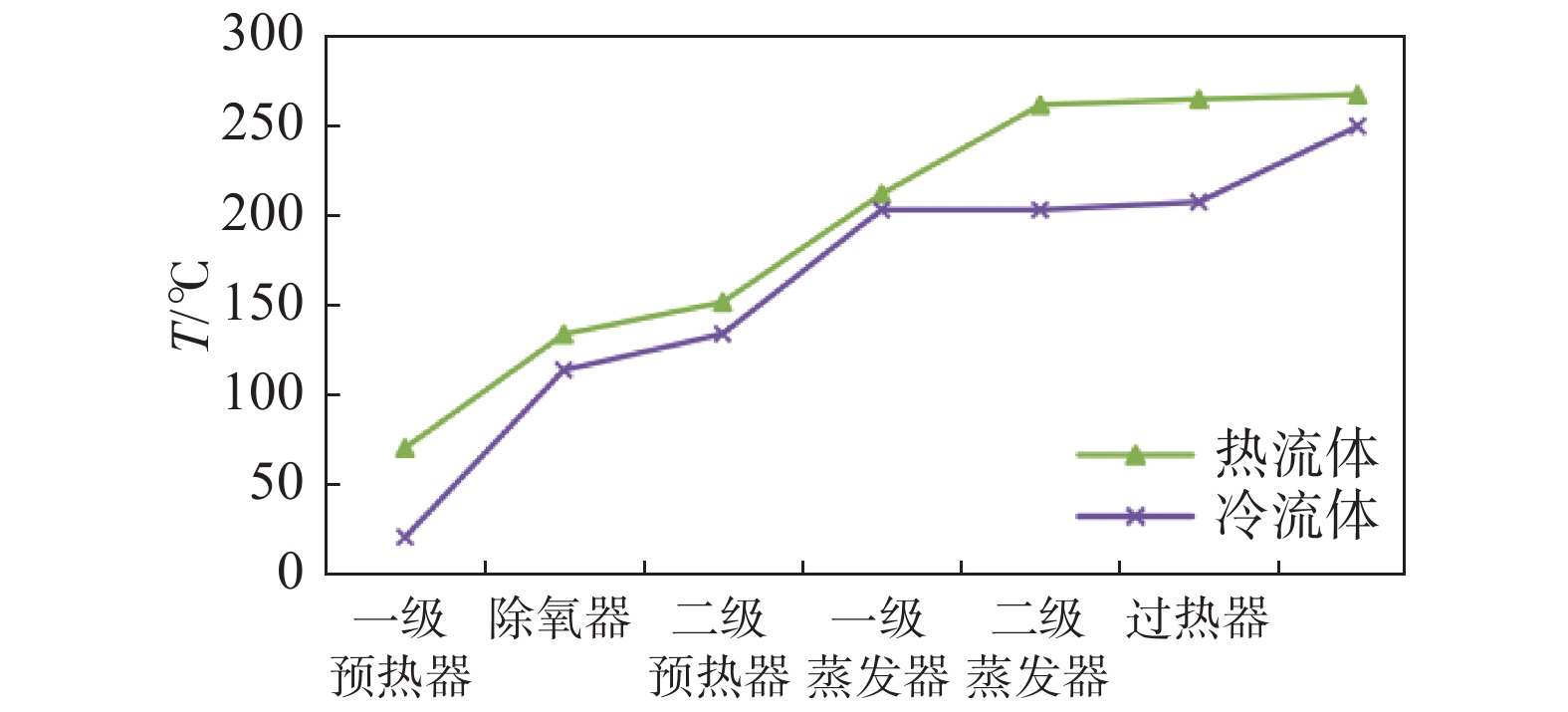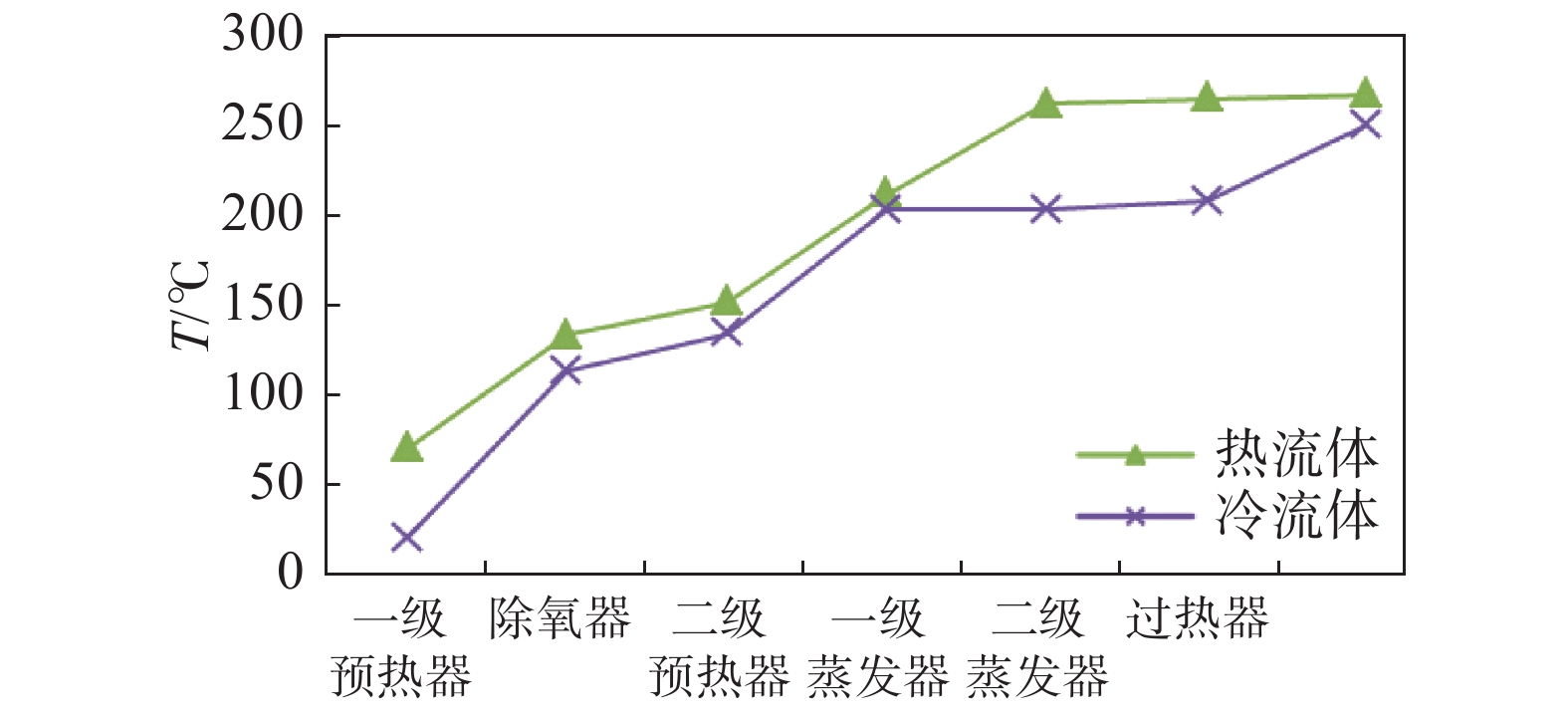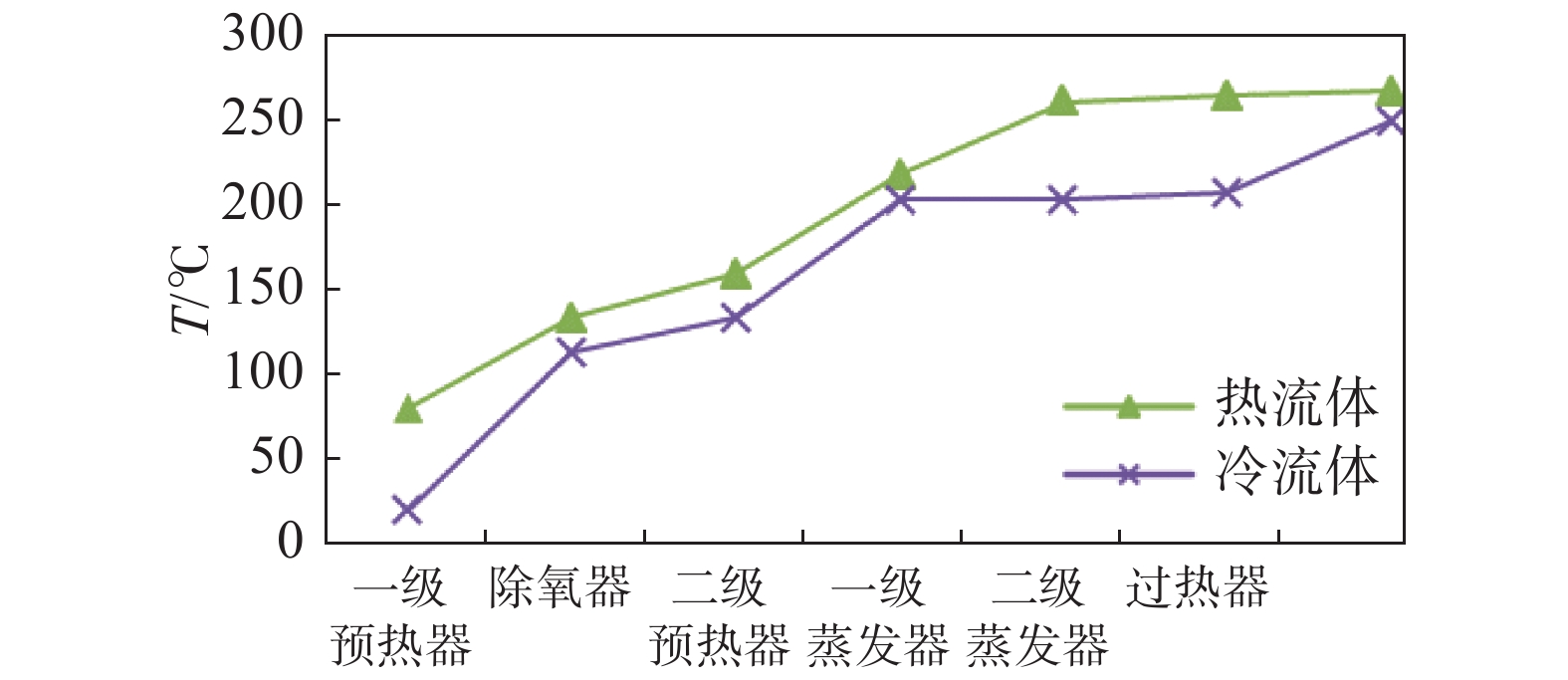-
钢铁、石油、化工等行业对蒸汽需求量大,这些企业是国家基础设施建设和发展的重要支持性企业。为支持实现国家“碳达峰、碳中和”的战略目标,“十四五”是中国实现“碳达峰、碳中和”的关键时期,探索这些重点高排放企业的减排方案是目前迫切的行动项次。
核能技术在中国已得到广泛成熟地发展,是一种公认的安全可靠的零碳排放清洁能源,国内多家企业已开展了“碳中和”目标性核能的发展策略研究[1-3],研究核能作为绿色能源更广泛的服务于社会能源需求的可能性;俄罗斯已在核能供热技术方面开展了深入的研究[4];我国也开展了相关的研究,探讨核能集中供热的技术可行性[5-10];国电投集团以AP1000核电机组为例,深入地研究了核电汽轮机抽汽供民用采暖供热方案的可行性[11-13];以上的这些研究重点在于利用核能为周边居民提供采暖用热水,我国目前还没有核能供工业蒸汽技术方面的研究成果。
压水堆一回路是含放射性物质的高压水,考虑到运行人员及周围环境的安全性,不能直接利用压水堆一回路的热量;压水堆二回路中从蒸汽发生器中出来的主蒸汽参数为5.3 MPa,267.6 ℃[3],如直接用二回路低压缸排汽作为工业供汽,将导致二回路介质流失或因流经过长的管道回收的水质不满足电厂要求。本文借鉴压水堆核电站厂内用蒸汽转换技术方案[14],考虑增加一个专门的工业用汽回路,用核电厂的二回路蒸汽作为热源,产生工业用汽回路的蒸汽作为工业供汽。
-
如果用主蒸汽热源来将常温工业用水直接加热到250 ℃的工业用蒸汽,从热力学第二定律来看,将造成大量的熵增和㶲损,热量品质下降,热效率低。另外,常温工业用水中溶解有大量矿物质和氧气,在加热蒸发过程中矿物质和氧气将解析出来,如果直接加热成蒸汽,解析出的矿物质将集聚在设备表面,形成一层厚厚的污垢,将影响到设备的换热性能,由于污垢与设备材料的差异,也将影响设备的性能和寿命;加热蒸发过程中解析出来的大量氧气将腐蚀设备的碳钢材料,加速设备的损坏,影响设备的寿命;另一方面,若直接将进口温度为常温的水加热到250 ℃的蒸汽,设备各部分的温差大,热应力和热冲击大,不利于设备的安全稳定运行。
因此,利用压水堆二回路热源产生1.8 MPa、250 ℃的工业用汽的蒸汽转换工艺应综合考虑热的利用率、设备的安全性及经济性。
工业供水回路通过两级水泵进行升压,第一级泵位于供水入口,将水升压到除氧器工作压力,第二级泵位于除氧器的出口,目的是将水进一步升压至需求的供汽压力及克服管道的压损。分级升压有三个好处,首先,分级升压有利于降低泵的单机负荷,提高泵的可靠性;其次,分级升压可以降低除氧器加热蒸汽压力,加热蒸汽可以是来自已做过部分功的低压缸抽汽,实现热源的分级利用;最后,可降低除氧器及一级预热器的工作压力,从而节省除氧器及一级预热器的设备成本。
工业供热回路的冷凝回水经泵1后进入一级预热器,一级预热器的目的是利用较低温度的加热蒸汽疏水余热,将工业供水加热到接近除氧器饱和温度,因此可减少除氧器的蒸汽消耗量,提高热量的利用效率。
从除氧器出来的饱和水经二级泵加压后过冷度约为90 ℃,如直接进入蒸发器,蒸发器内部需设置预热段,将使蒸发器的内部结构复杂,换热性能差。因此,设置了外置式二级预热器,二级预热器是利用蒸发器排出的疏水的余热将水加热到接近工作压力1.82 MPa下的饱和温度。为维持水在管道中的稳定流动,消除汽蚀,二级预热器出口水温应至少预留5 ℃的过冷度。
二级预热器出口水进入蒸发器壳体,吸收加热蒸汽凝结热而转化为蒸汽,在蒸发器中,为大空间沸腾换热,出口的蒸汽为饱和蒸汽,温度为207.6 ℃。
因蒸发器的加热蒸汽凝结水的饱和温度比壳侧的蒸汽温度高50 ℃,为充分利用疏水余热,将蒸发器设置为两级,一级蒸发器为利用疏水余热进行加热蒸发产生工业蒸汽,二级蒸发器为加热蒸汽凝结换热产生工业蒸汽,一级蒸发器和二级换热器的壳侧工业蒸汽管道为并联结构,管程的热源流体管道为串联结构。为简化管道的布置,节省设备成本,一级和二级蒸发器在设备设计时也可融合设计到一个壳体中。
为得到工业所需的250 ℃的过热蒸汽,还需要设置过热器进行进一步换热,加热蒸汽为压水堆二回路中蒸汽发生器的主蒸汽(参数为5.3 MPa,267.6 ℃)。
分级加热的蒸汽转换系统工艺流程如图1所示。
-
为论证上一章节布置的蒸汽转换系统的可行性,需要依据能量守恒原理计算加热蒸汽消耗量以及各个设备的热力参数,确保各设备的热力参数符合热力学第二定律。
对于本文论证的蒸汽转换系统,已知的条件是加热蒸汽温度和压力,工业用汽压力、温度和流量,工业供水为常温常压自来水。
为计算蒸汽转换系统的蒸汽消耗量,需要先假设加热蒸汽侧的最终疏水温度。疏水温度越高,越有利于各换热器的换热,但将消耗更多的蒸汽,不利于蒸汽转换系统的热效率。疏水温度越低,虽然有利于提高蒸汽转换系统的热效率,但换热设备的端差过小,将增加换热设备的成本。参考相关文献[15],水-水换热器的最小端差为5 ℃,汽-汽换热器的最小端差为15 ℃。
加热蒸汽消耗量由以下热平衡公式(1)计算:
$$ {w}_{\mathrm{h}}={w}_{\mathrm{c}}({h}_{\mathrm{c}\mathrm{o}}-{h}_{\mathrm{c}\mathrm{i}})/\eta ({h}_{\mathrm{h}\mathrm{i}}-{h}_{\mathrm{h}\mathrm{o}}) $$ (1) 式中:
$ {h}_{\mathrm{c}\mathrm{o}} $ ——冷侧流体出口焓值(kJ/kg);$ {h}_{\mathrm{c}\mathrm{i}} $ ——冷侧流体进口焓值(kJ/kg);$ {h}_{{\rm{hi}}} $ ——热侧流体入口焓值(kJ/kg);${h}_{\rm{ho}}$ ——热侧流体出口焓值(kJ/kg);$ {w}_{\mathrm{c}} $ ——冷侧流体流量(kg/s);$ {w}_{\mathrm{h}} $ ——热侧流体流量(kg/s);$ \eta $ ——蒸汽转换系统热效率,即工业用蒸汽回路吸热与加热蒸汽放热之比。 -
对于各换热设备的热力参数,根据运行经验及各设备的工作机理,可确定如下参数:为避免工业管道的汽蚀,推荐除氧器进口工业供水过冷度为20 ℃[16];蒸发器入口水过冷度为5 ℃;二级蒸发器的加热蒸汽出口为饱和水。
对于一级预热器,已知工业供水压力、出水过冷度、进水温度、工业供水流量以及热侧疏水出口温度,根据已知的水的温度和压力可查水的物性参数表获得工业供水侧进出口及疏水出口比焓,由此可根据能量守恒公式(2),计算出热侧疏水入口焓值,由焓值和压力即可查水物性表获得温度参数。
$$ {h}_{\mathrm{h}\mathrm{i}}=\frac{{w}_{\mathrm{c}}\left({h}_{\mathrm{c}\mathrm{o}}-{h}_{\mathrm{c}\mathrm{i}}\right)}{\eta {w}_{\mathrm{h}}}+{h}_{\mathrm{h}\mathrm{o}} $$ (2) 式中各变量含义与公式(1)相同。
对于二级预热器,已知冷侧流体压力、进口焓值、出口水过冷度、流体流量以及热侧疏水出口焓值,同样根据能量守恒公式可计算二级预热器热侧疏水入口焓值,由焓值和压力即可查水物性表获得疏水入口温度参数。
对于过热器,已知冷侧流体压力、进口焓值、出口蒸汽温度、流体流量以及热侧加热蒸汽进口温度、压力,出口焓值,根据能量守恒公式(3)可计算过热器热侧流体出口焓值,由焓值和压力即可查水物性表获得热侧流体出口温度。
$$ {h}_{\mathrm{h}\mathrm{o}}={h}_{\mathrm{h}\mathrm{i}}-\frac{{\mathrm{w}}_{\mathrm{c}}\left({h}_{\mathrm{c}\mathrm{o}}-{h}_{\mathrm{c}\mathrm{i}}\right)}{\eta {w}_{\mathrm{h}}} $$ (3) -
由热力学第二定律可知,对于换热器而言,为使热量从压水堆二回路蒸汽(热源流体)传递给工业供汽回路(冷源流体),热源流体的温度应始终高于冷源流体的温度。本文计算考虑的疏水温度在65~80 ℃的范围均符合热力学第二定律的要求。
由表1可知,如将热源疏水温度从80 ℃降低到65 ℃,加热蒸汽消耗量从348.5 kg/s降低到340.0 kg/s,加蒸汽耗汽量相对减少了2.5%,降低热源疏水温度,可减少加热蒸汽的消耗量,提高了蒸汽转换系统的经济性。
由图3~图4可知,设备的最小端差位置是在二级预热器的下端差(热流体入口温度与冷流体出口温度之差)以及一级蒸发器的上端差(热流体出口温度与冷流体入口温度之差)。
当疏水温度为80 ℃时,最小端差值为15.4 ℃;当疏水温度为65 ℃,最小端差值为5.4 ℃;疏水温度从80 ℃降低到65 ℃,将导致二级预热器的传热温差减少为1/3,在其他条件不变的情况下,疏水温度为65 ℃时二级预热器需要的换热面积约为疏水温度为80 ℃时的3倍,其他换热器面积也将成倍的增加。
由以上结果可知,蒸汽转换系统最低疏水温度为65 ℃,如继续降低疏水温度,最小端差值将小于5 ℃,疏水温度如降低2 ℃,二级预热器设备换热面积将增加一倍,而且结构变得更复杂,设备成本增加。如疏水温度降低到60 ℃,在二级预热器中将出现热源温度低于冷源温度的情况,将违背热力学第二定律,该系统技术上不可行。
-
本文研究了利用压水堆核电站二回路蒸汽进行加热产生工业用汽的蒸汽转换系统方案具备技术可行性,以某压水堆参数为例,假设加热蒸汽参数为5.3 MPa,267.6 ℃,工业用汽参数为1.8 MPa、250 ℃、300 t/h,可得出以下结论:
蒸汽转换系统内设置预热器、除氧器、蒸发器以及过热器等设备进行分级加热,对热源进行分级利用,不仅可提高加热蒸汽的有效利用率,而且可提高设备运行的安全性。
降低疏水温度可减少加热蒸汽的消耗量,可提高蒸汽转换系统的经济性,但将增加设备的成本。
计算结果显示,热源疏水温度最合理值为65 ℃,如疏水温度低于60 ℃,在二级预热器中将出现热源温度低于冷源温度的情况,将违背热力学第二定律。
Feasibility Research in the Technology for Industrial Steam Supply by PWR Nuclear Power Plant
doi: 10.16516/j.gedi.issn2095-8676.2022.02.017
- Received Date: 2022-01-05
- Rev Recd Date: 2022-04-25
- Available Online: 2022-06-24
- Publish Date: 2022-06-25
-
Key words:
- pressurized water reactor nuclear power plant (PWR) /
- industrial steam supply /
- nuclear energy heating /
- hierarchical utilization of energy /
- steam conversion system /
- heat source drainage temperature
Abstract:
| Citation: | ZHANG Yuzhen, LIAO Baifeng, WANG Jing, CHEN Xiaojuan. Feasibility Research in the Technology for Industrial Steam Supply by PWR Nuclear Power Plant[J]. SOUTHERN ENERGY CONSTRUCTION, 2022, 9(2): 120-124. doi: 10.16516/j.gedi.issn2095-8676.2022.02.017 |


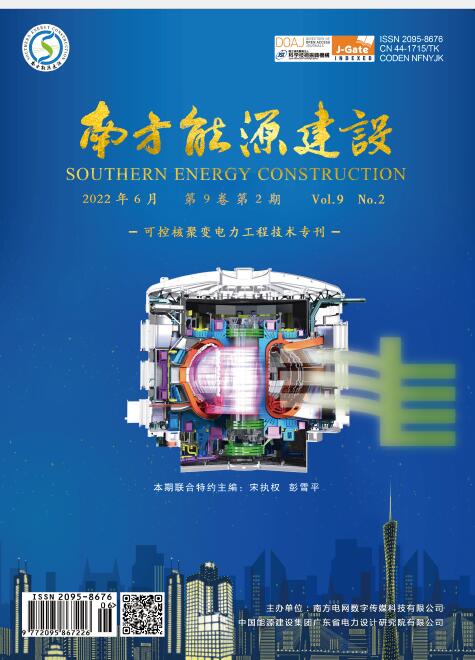

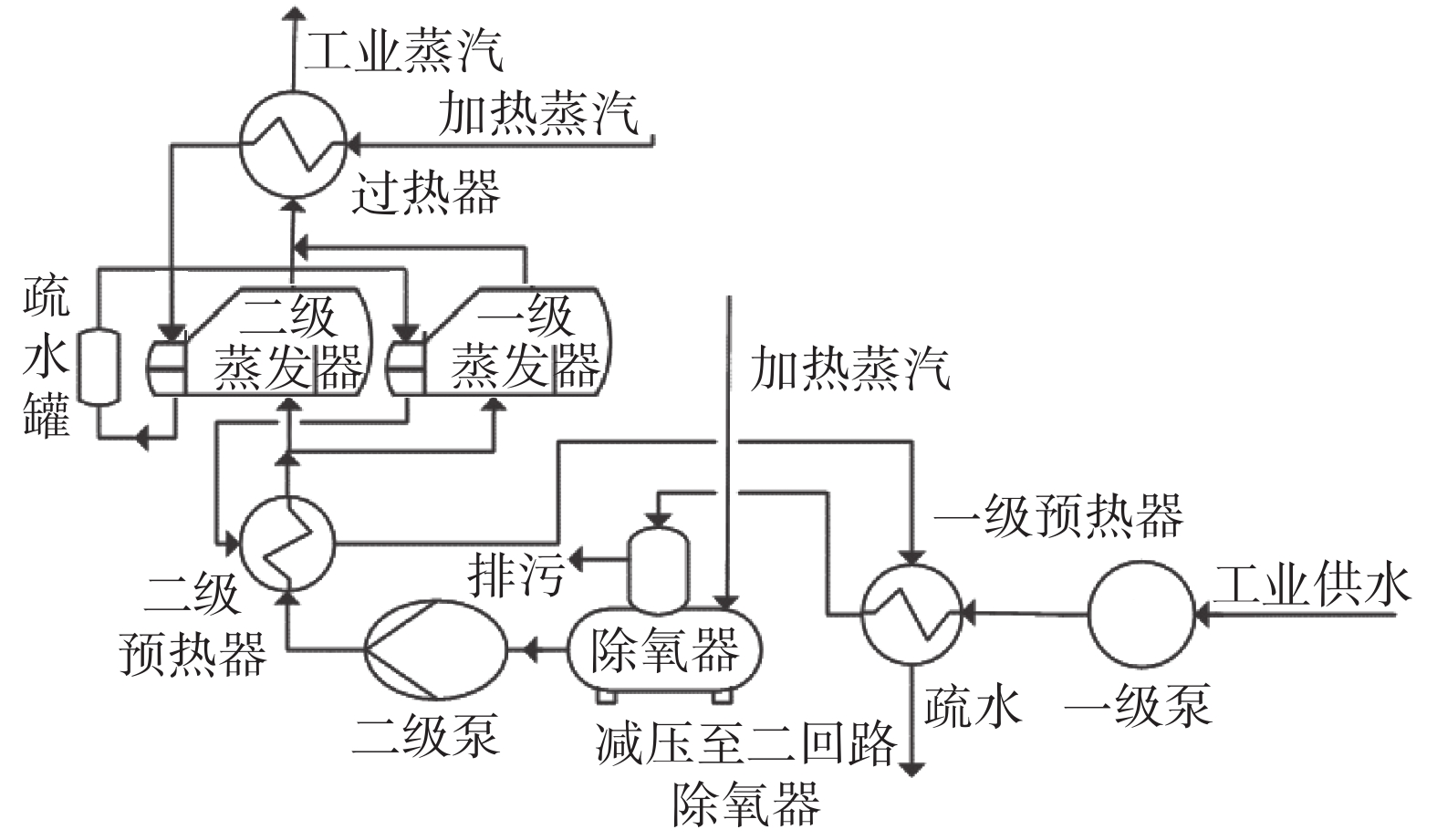

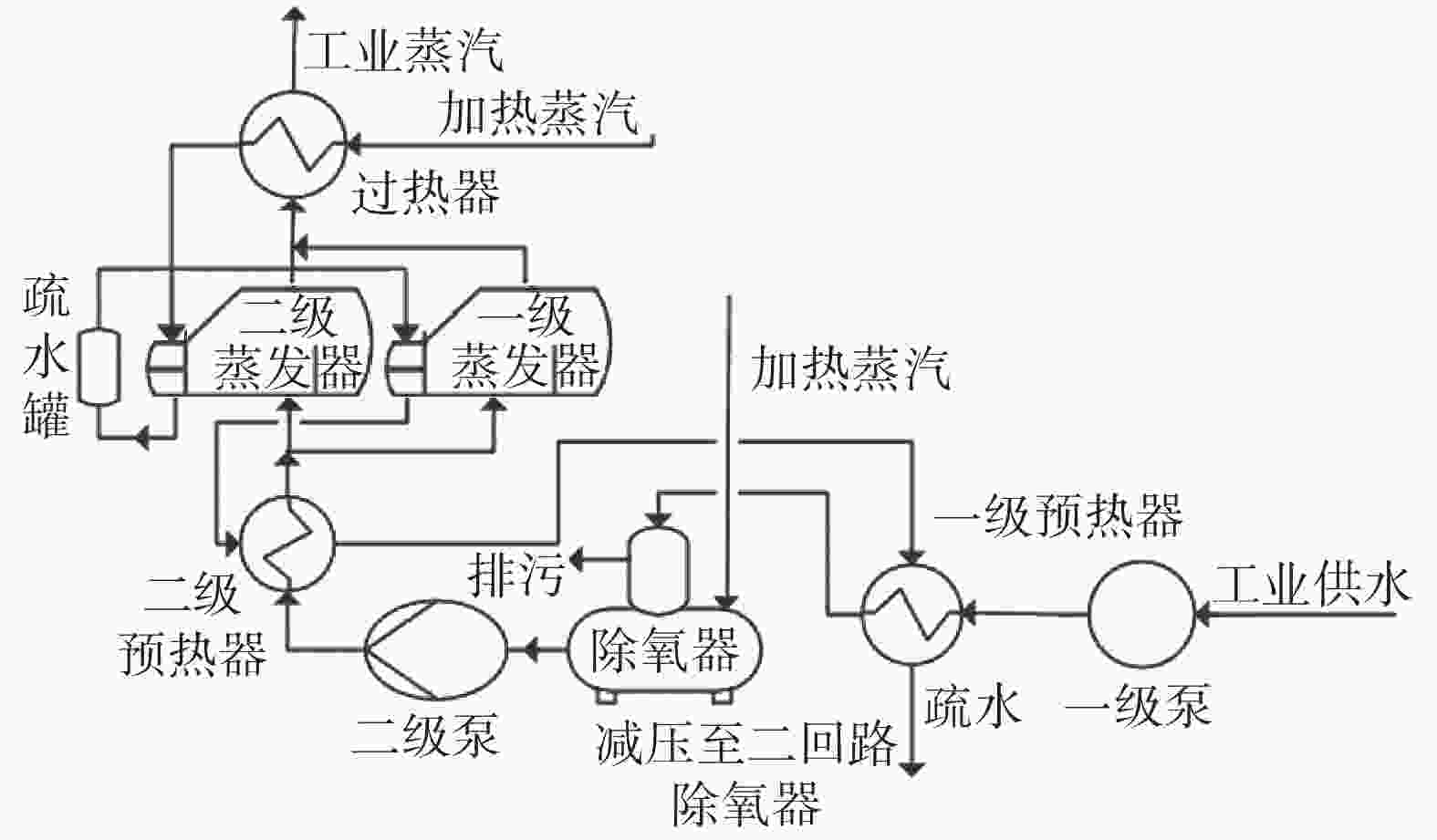










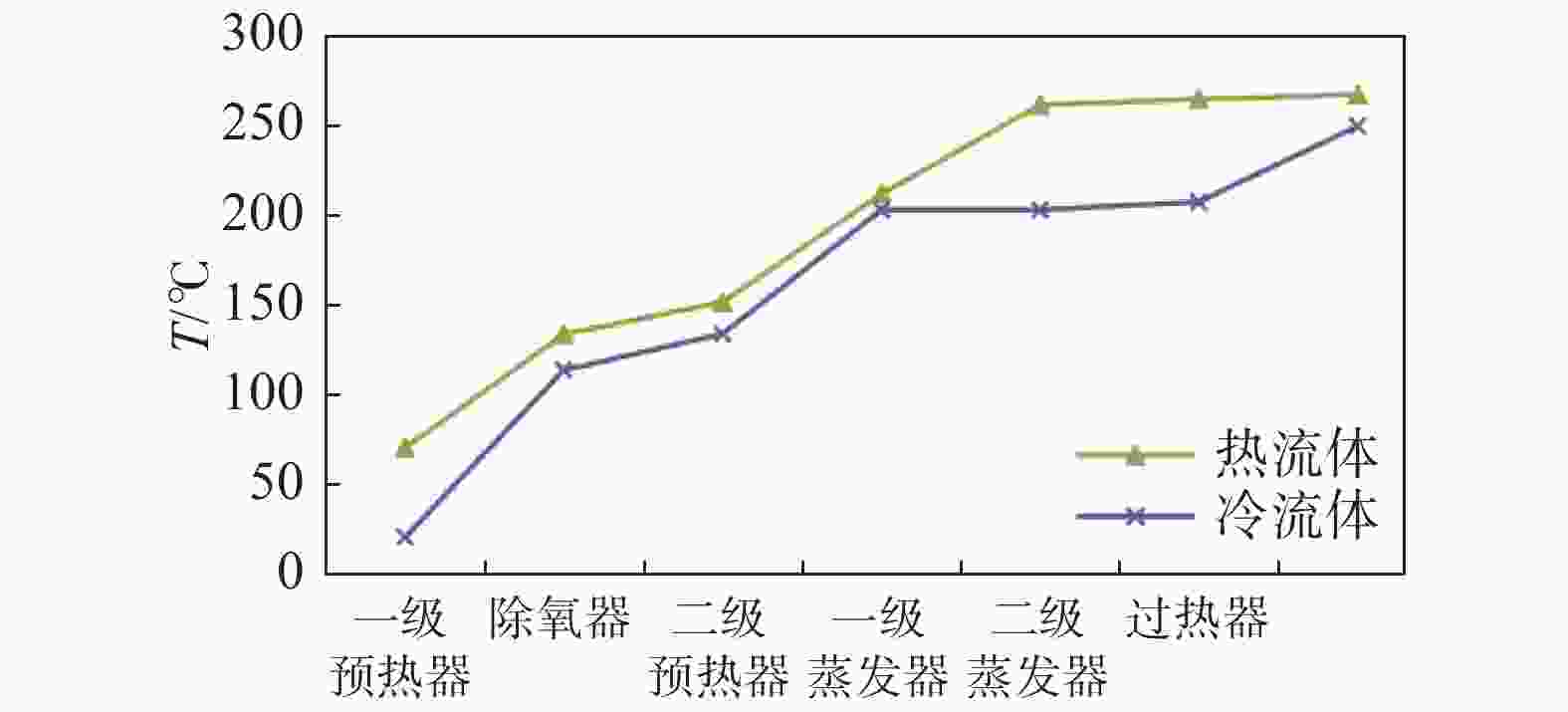
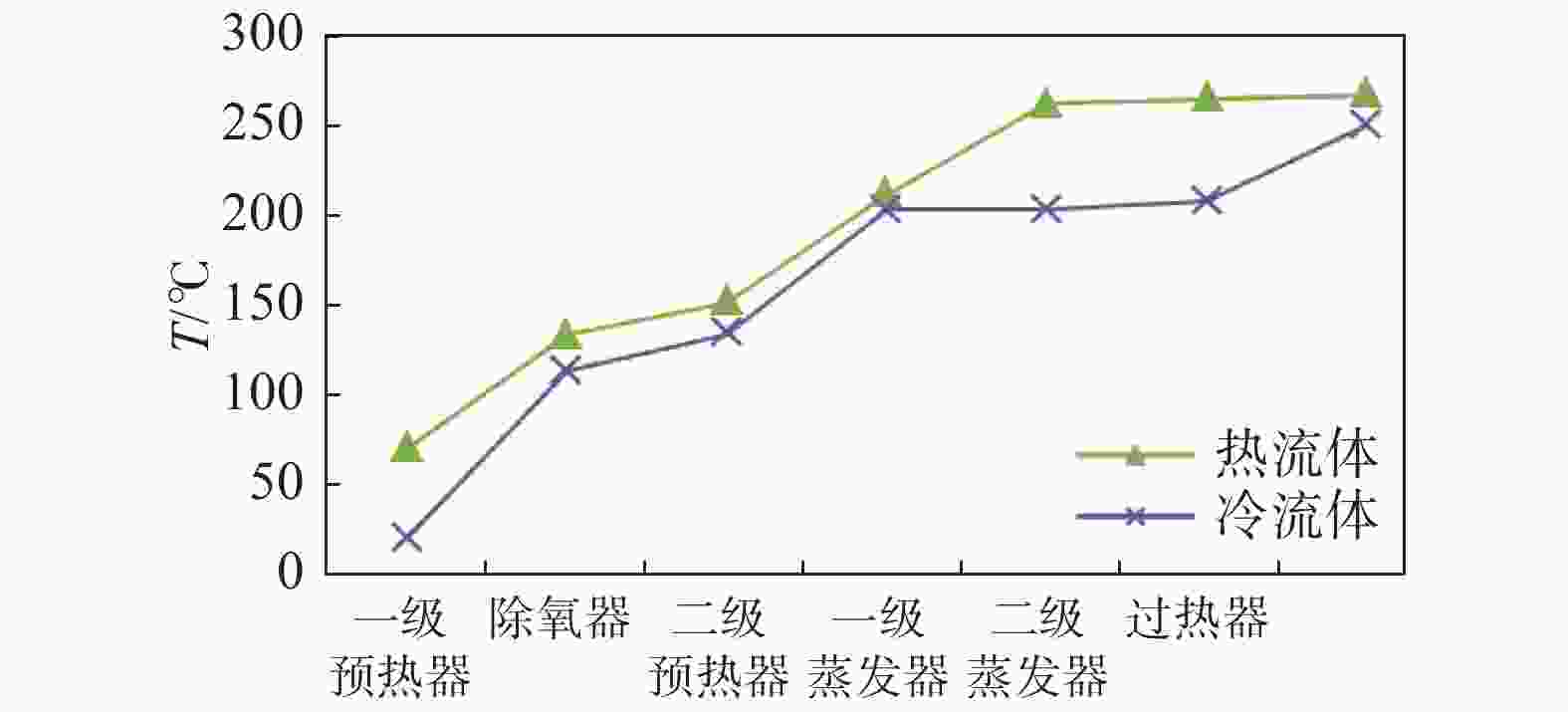
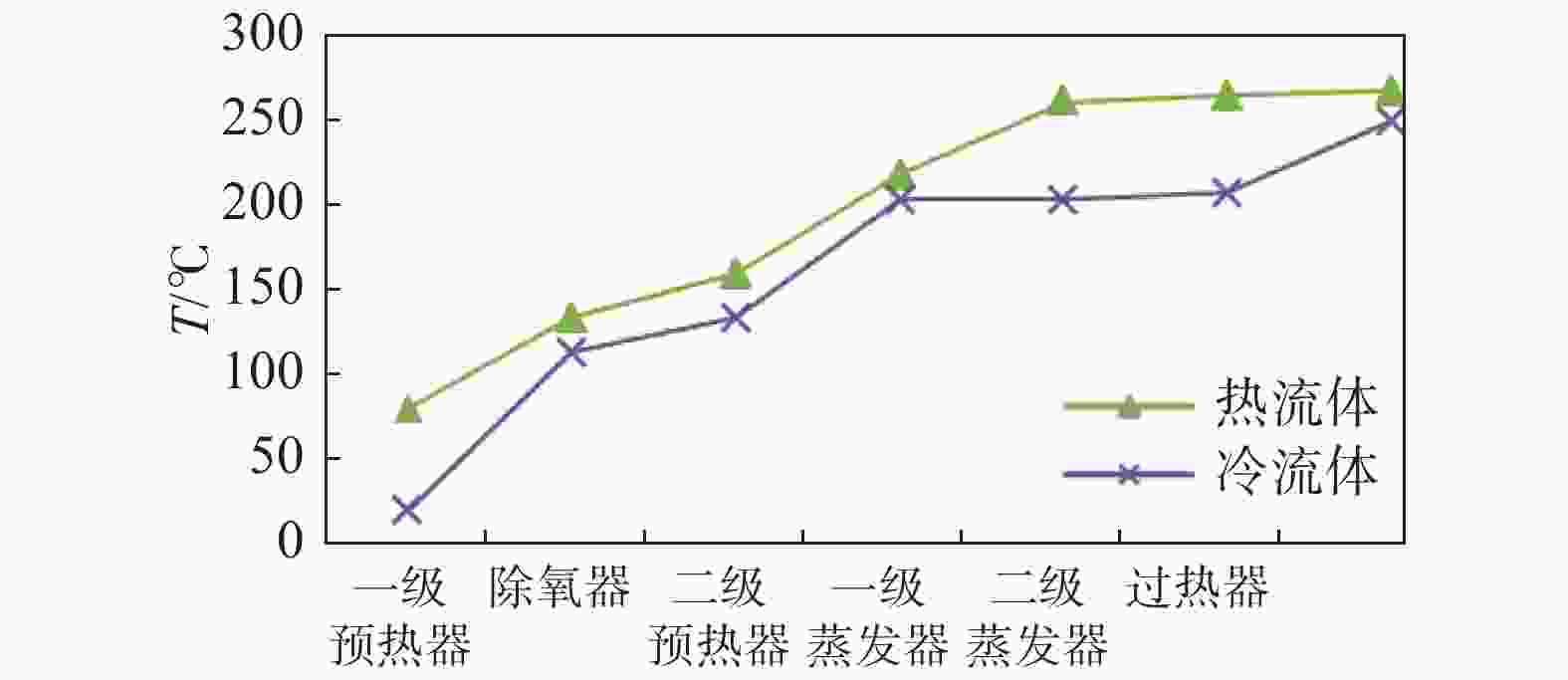

 DownLoad:
DownLoad:
